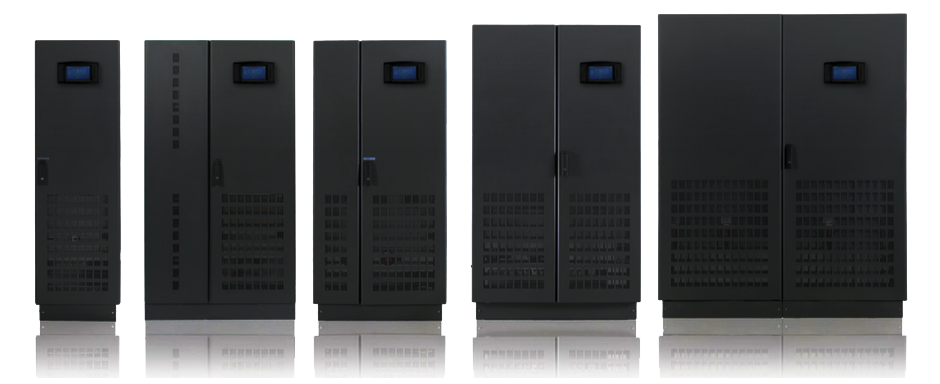
Space-saving and simple to service
Space-saving mechanical design results in a power density of up to 363kW/m2 and front-to-top airflow allows installation directly against a wall (60–120kW and 400–500kW units). For ser-vice, only frontal access is needed, which means that the total footprint with maintenance clear-ances is minimized.
Optionally a top cable entry enclosure may be used for the 400–500kW UPS. This enclosure per-mits the connection of all incoming power cables from the top and extends the overall width of the UPS by 500mm.
Well optimized for modern loads
A 1.0 rated output power factor means that each and every Watt of power is real power that is available for use. This helps with optimizing the complete electrical infrastructure in terms of switchgear and cabling, both upstream and downstream from the UPS.
Up to 10 units can be configured in parallel to pro-vide up to five megawatts of UPS power or redun-dant backup. This scalability means the UPS system capacity can be sized to match the load require-ments, with the possibility to add incremental ca-pacity later, when power needs change. The result-ing savings in power usage over the service life of the UPS are substantial.
Battery runtime can be optimized to match the exact needs. The UPS supports usage of 42–48 batteries (60 –120 kW units) or 44–50 batteries (160–500 kW units) in a single string, which min- imizes the total cost of installation as an optimal configuration can be used and so there is no need to oversize the battery.
UPS cabinet configuration
• Online double conversion UPS
• HMI interface with mimic diagram and LCD (60–200kW)
• Graphical touch screen display (250–500kW units)
• Input, bypass and battery protection fuses
• Manual bypass switch (optional for the units 400–500kW)
• Single- and dual-input feed available
• Communication interfaces: RS-232 port and 5 input dry contacts (incl.EPO and GEN On)
Options
• Integrated back-feed protection
• Parallel system kit
• Synchronization kit
• Battery temperature sensor
• Remote panel (graphical touch screen display)
• Halogen-free cabling
• IP21
• Control and monitoring (relay card, ModBus RS- 485, ModBus TCP/IP, SNMP)
• External battery cabinets
• Top cable entry enclosure (400-500kW units)



